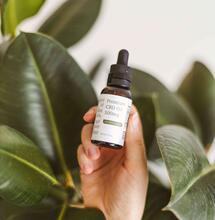Raw is better
_100.jpg)
If harvest was not bad and you want to use a part of it in a cannabis oil, as an unusual way of taking cannabis, but the idea of handling alcohol to extract cannabinoids frightens you and you find the smell of butane dreadful, a simple method consists in following the “recipe of the Swiss doctor Manfred Fankhauser” as we call it today.
Take a bunch of dry weed and chop it finely, add edible oil (such as olive oil, colza oil, linseed oil, or hempseed oil) in a tin until the cannabis is fully covered. Let it stand for three weeks in a fresh and dark place, while stirring the tin every day. Place the mixture in a strainer and your cannabis oil will be ready. As simple as that. Without getting mad with countless steps, which may even be dangerous, you will instantly prepare a terrific cannabis oil, for both external and internal use.
It cannot be smoked, but rather applied on the skin and eaten (as a vegan-free product). You can also use it to e.g. season your food. The oil should not be fried or however heated in a pan at high temperature, as cannabinoids would evaporate, thus making the remedy useless. After letting the preparation stand, as early as after ten days, you will notice that the oil has become denser, which shows that cannabinoids are being released. After three weeks we recommend, in accordance with the recipe, draining the vegetable part, otherwise you can leave it in the jar for an indefinite amount of time.
But beware, as the oil is consumed by use, the vegetable part could come into contact with air and develop moulds. This is a very simple and old recipe, meaning that it is safe. Today, however, there is a variation that involves heating the oil to facilitate the dissolution of THC and produce a stronger end product. But this requires several hours of preparation and temperature has to be fine-tuned to obtain a good product without messing everything up.
The Christian anointing oil, as illustrated in the Bible, contained ‘sweet cane’ (cannabis), in addition to cinnamon and myrrh, which was just soaked in olive oil. In a paper by Piero Dolara, “Analgesic Effects of Myrrh”, published on the scientific periodical Nature, myrrh is described as being a very potent analgesic, while cinnamon, as far as I could understand, was added to open the pores of the skin and let the oil penetrate freely. At will, therefore, depending on your needs, you can add other herbs to the oil to improve its therapeutic effect. A few hints at the practice of anointment may also be found, e.g. in the Vajrayana Buddhism of the Himalaya mountains, in the practice of consecrating a disciple to special meditation practices.
Even the Sacred Scriptures of the Jews show that the practice of anointment was a prerogative of kings, priests and prophets in the fulfilment of their functions, for divine powers to be bestowed on them. A religious concept that is now found in the Tewahedo Ethiopian orthodox church – the least corrupt among Christian churches, which is also used as reference for all Rastafarians who are in favour of the use of psychotropic plants for medicine and meditation – is the concept of the unity of the divine and human nature of Jesus Christ.
Applying it as an ointment on the skin, as demonstrated by a study conducted by the University of Bonn, published on Science Daily in 2007, may alleviate allergies and skin inflammation through its refreshing and itch-soothing properties. Equally in 2007, the Journal of Dermatological Science showed that a cannabis ointment may be advantageous in the treatment of psoriasis, while the Jamaicans, with their folk tradition associated with hemp used as a medicine, apply cannabis ointment to treat muscular pain and rheumatism.
Obviously, if your idea is to use it for your personal care, it is better to use the flowers of medicinal plants, such as those rich in CBD, which were recently developed by all commercial seed producers. As for external use, I personally find the ointment prepared by this method really advantageous as a remedy to the skin adherence of scars. Scars tend to adhere to the underlying skin layer, thus causing pain as a person moves.
If you inhale cannabis, it will cause a relaxation of tissues, which will ultimately release the skin. However, if you do not wish to feel the psychoactive effect of cannabis, the application of the ointment will obviate the problem without causing any mental high. A pleasant feeling similar to a slight tickle will prevail in the oiled area, which will be effectively softened. This also suggest that inhaling cannabis is even a superfluous practice. The effects of cannabis, which cause pleasure to the user, are therefore clear.
I also noticed that it is an exceptional remedy to corns and calluses in the feet through its soothing properties. Conversely, its internal use (through ingestion) may effectively treat e.g. stomach ache, as cannabinoids reach the blood stream through the digestive process. In early treatment, it is crucial to start with a small dose, so as to understand the actual effects and fine tune the dosage of this pretty versatile oil.
The recipe may obviously vary in quantities – if you add more herb than oil or vice versa, the power of the medicament can be adapted to individual needs. For a softer solution, you can reduce the vegetable part and use the flower trimmings from your plant grooming and dry leaves. On the other hand, for a more potent solution, you can add kif or hashish (pure ones, not cheap ones found in the street). Producing cannabis oil is also a good idea if you are left with a small quantity of weed and the next harvest is still far. If you dilute it with oil, it will last more and you will never run out of it.



